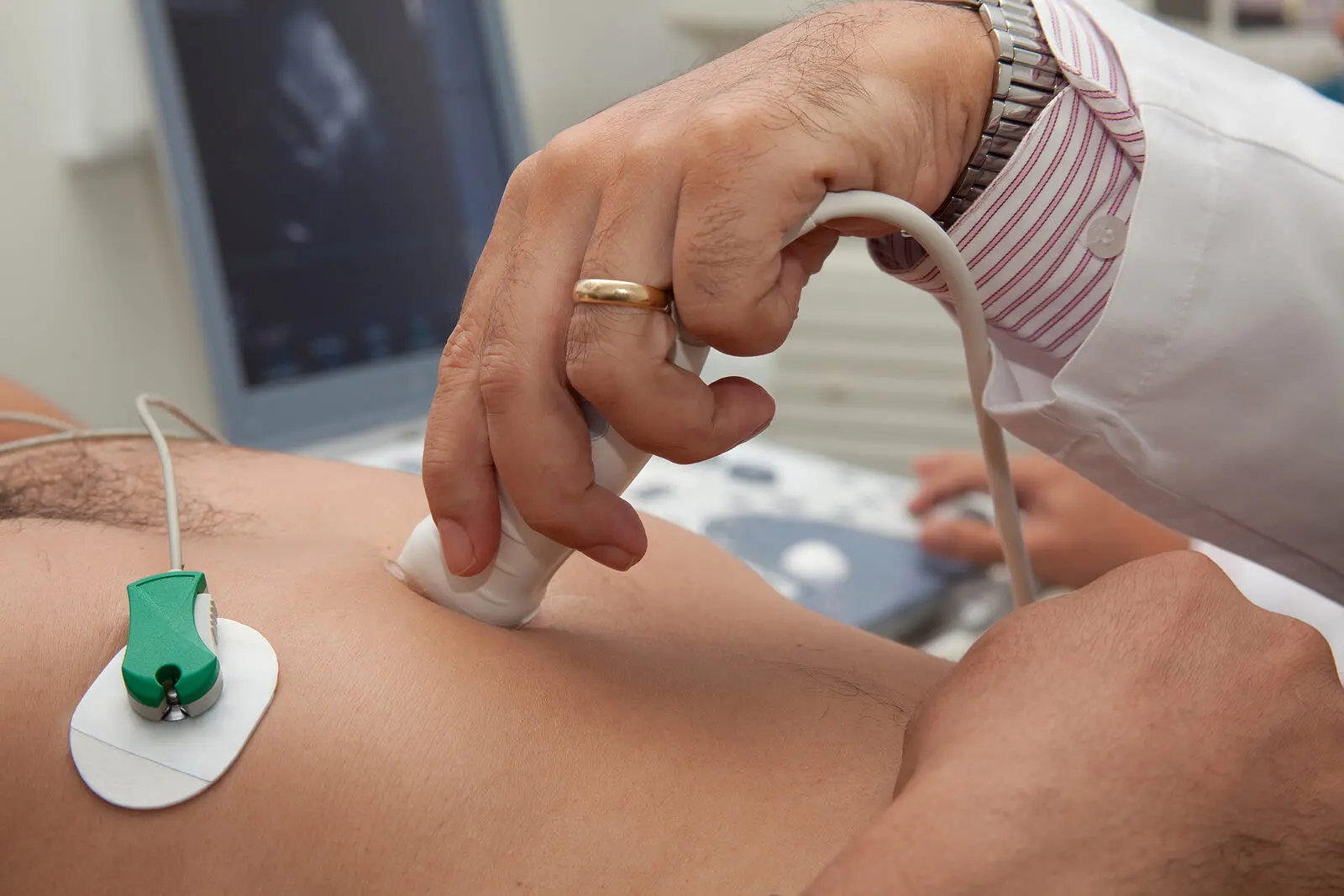Carney Complex: Causes, Symptoms, and Treatments

Carney complex (CNC) is a rare hereditary syndrome. It’s characterized by three elements:
- Skin pigmentation in the form of small spots
- Hyperactivity in the endocrine glands
- The appearance of myxomas, or small tumors
Carney complex is also known by other names, such as familial myxoma, lentigo syndrome, nevus syndrome, myxoid neurofibromas, mucocutaneous myoma, auricular myxoma, and blue nevus. People with this condition have an increased risk of cancer.
There are reports of about 600 patients affected by Carney complex. Between 60% and 75% of the cases have hereditary causes. In turn, between 25% and 40% are considered sporadic due to spontaneous mutation of a gene.
What is Carney complex?
Carney complex is a condition characterized by the presence of skin pigmentation, myxomas, or connective tissue tumors and problems in the endocrine glands – i.e. the glands that produce hormones.
This disease was first described in 1985 by the scientist Aidan Carney. It affects men and women equally, although there may be a slight prevalence in the female sex. The diagnosis is usually made between the second and third decade of life.
People with the disorder have an increased risk of developing the following types of cancer:
- Adrenocortical cancer
- Pancreatic cancer
- Thyroid cancer
- Colorectal cancer
- Testicular cancer
- Ovarian cancer
- Hepatic cancer
The symptoms
Myxomas are small tumors that usually occur in the breast area or in the cardiac region within the Carney complex. They are benign, which means that they’re not characterized as cancer.
The spots usually correspond to lentigines and blue nevi. The former are brown or black spots of 1 to 5 millimeters. Blue nevi are blue, blue-gray, or blue-black moles.
On the other hand, tumors appear in the endocrine glands, which can be benign or not. The most common are those of the adrenal, thyroid, ovaries, testicles, and pituitary glands.
It’s also possible that acromegaly occurs, which is a disease in which the size of the hands, feet, nose, and jaw increases. Also, Cushing’s syndrome may occur, in which there’s an accumulation of fat in the shoulders, a full-moon appearing face, and purplish or pink striae.

We think you may be interested in reading this, too: Sandifer’s Syndrome: Causes, Symptoms and Treatments
Why does it occur?
Carney complex is an inherited genetic condition. It can be inherited in an autosomal dominant manner or occur spontaneously.
Autosomal dominant inheritance occurs when the abnormal gene is inherited from only one parent. In the sporadic form the gene mutation occurs, but without a family history.
In some cases, there’s a mutation of the PRKAR1A gene. If this is present in one parent, the risk of passing it on to a child is 50% in each pregnancy, regardless of the sex of the child.
The PRKAR1A gene is believed to be a tumor suppressor. This means that it slows down cell division, repairs DNA damage, and signals when cells should die. Therefore, an abnormality in this gene could be the cause of tumor proliferation.
There are also cases of this syndrome in which there’s no abnormality in that gene. Researchers think that there are other unidentified sections of DNA that may be responsible.
Diagnostic criteria for Carney complex
A clinical evaluation is first used for diagnosis. In this syndrome, there are 12 relevant features. If a person has at least of them, the disease is confirmed.
People with a family history need to only have one of the following characteristics.
The 12 features or criteria are as follows:
- Pigmentation of the skin with the patterns of the Carney complex
- Myxomas (benign tumors)
- Cardiac myxoma
- Myxomatosis of the breast (tumor in the connective tissue of the breast)
- Mammary ductal adenomas (cancer in the mammary ducts)
- PPNAD or primary pigmented nodular adrenocortical nodular disease
- Acromegaly
- Calcifying large cell Sertoli tumor of the testis (LCCST)
- Thyroid cancer
- Melanotic psammomatous schwannoma (nerve tumors)
- Blue nevi
- Osteochondromyxoma (bone tumors)
There are other physical signs that could suggest the presence of Carney complex. However, they’re not conclusive:
- Characteristic freckles
- Myocardiopathy
- Polyps in the colon
- Many blue nevi
- Multiple acrochordons or lipomas
- A single thyroid nodule (in a young person)
- Several thyroid nodules (in older persons)
- Pilonidal sinus (abscess in the cleft of the buttock).
- An abnormal glucose tolerance test (GTT) result
- High levels of insulin-like growth factor 1 (IGF-I)
- A family history of cancer, Cushing’s syndrome, acromegaly, or sudden death
- Thyrotropin-releasing hormone (TRH) test with paradoxical growth hormone (GH) response
Like this article? You may also like to read: What is Musical Ear Syndrome and How is it Treated?
Diagnostic tests
Diagnostic tests are available to detect mutations in the PRKAR1A gene if there’s suspicion that a person has Carney complex. If someone has the mutation and meets 1 of the 12 criteria listed above, the syndrome is diagnosed.
Diagnostic tests such as the following are used to determine whether the conditions listed in the 12 criteria are present:
- Echocardiogram: If there’s a family history, this test should be done once a year. If the person already has an initial diagnosis, it’s done every 6 months.
- Periodic skin evaluations.
- Blood tests: Cortisol, IGF1, and prolactin levels are measured.
- An ultrasound of the thyroid gland.
- General endocrine system tests.
- An ultrasound of the testicles.
The above tests allow confirmation of the diagnosis, but also serve to follow in detail the evolution of the Carney complex.

Treatment
Treatment of Carney complex is oriented to the management of the specific symptoms presented by each patient. A multidisciplinary team is usually required to provide adequate care.
In general, myxomas require surgical interventions. If they’re in the cardiac area, they will be open heart. When Cushing’s syndrome is present, removal of the adrenal glands may be necessary. Also when there is a cancerous tumor anywhere in the body.
Genetic counseling should also be offered to the affected person and his or her family. It’s common that those suffering from Carney complex also require psychological support.
We still don’t know very much about Carney complex
Several research studies are currently underway to further the understanding of the condition. Clinical trials are also being conducted in various parts of the world.
It’s very important that people with a family history of Carney complex remain vigilant. Likewise, those who have been diagnosed should have regular check-ups and examinations to avoid complications.
All cited sources were thoroughly reviewed by our team to ensure their quality, reliability, currency, and validity. The bibliography of this article was considered reliable and of academic or scientific accuracy.
- Yin, Z., & Kirschner, L. S. (2009). The Carney complex gene PRKAR1A plays an essential role in cardiac development and myxomagenesis. Trends in cardiovascular medicine, 19(2), 44-49.
- Zubiri, C. G., Yebra, M. Y., Antón, C. S., Madero, R. G., Espinosa, L. M., & Bango, M. Y. (2009). Mixoma cardiaco: serie de 30 pacientes. Revista clinica espanola, 209(10), 478-482.
- Grande, E. J. L., Martínez, D. A. K., & Boillos, M. G. (2011). Complejo de Carney. Endocrinología y Nutrición, 58(6), 308-314.
This text is provided for informational purposes only and does not replace consultation with a professional. If in doubt, consult your specialist.








